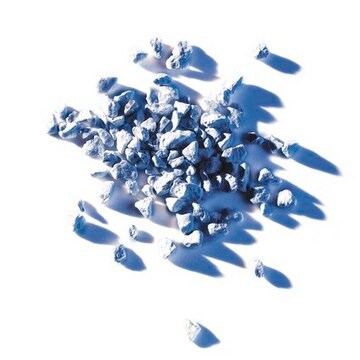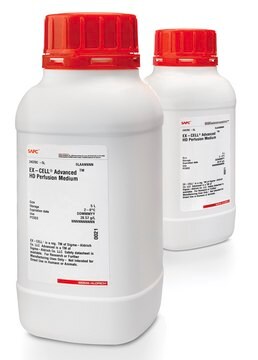237132
Sulfate de calcium
−325 mesh, 99%
Synonyme(s) :
Gypse
About This Item
Produits recommandés
Niveau de qualité
Pureté
99%
Forme
powder
Technique(s)
IR spectroscopy: suitable
Taille des particules
−325 mesh
Chaîne SMILES
[Ca++].[O-]S([O-])(=O)=O
InChI
1S/Ca.H2O4S/c;1-5(2,3)4/h;(H2,1,2,3,4)/q+2;/p-2
Clé InChI
OSGAYBCDTDRGGQ-UHFFFAOYSA-L
Vous recherchez des produits similaires ? Visite Guide de comparaison des produits
Application
- Calcium Sulfate in Biomedical Applications: A study explores a bioactive degradable composite bone cement based on calcium sulfate and magnesium polyphosphate, highlighting its potential in medical and dental applications for bone repair and implant coatings (Peng S, et al., 2024).
- Environmental Applications of Calcium Sulfate: Research on the use of calcium sulfate in environmental testing shows its effectiveness in soil remediation, particularly in treating sulfate-deficient soils, thereby enhancing plant growth and soil health (Thanh NN, et al., 2024).
- Calcium Sulfate in Material Science: A novel study integrates calcium sulfate with alginate to develop hydrogel beads for controlled drug delivery, proving the material′s versatility and applicability in pharmaceutical formulations (Xie Z, et al., 2024).
- Calcium Sulfate in Cementitious Materials Development: Demonstrates the use of calcium sulfate as a primary binder component in the development of eco-friendly cementitious materials, offering a sustainable alternative to traditional Portland cement with improved mechanical properties and lower CO2 emissions (Zhang J, et al., 2024).
- Calcium Sulfate for Life Science Research: Highlights the role of high-purity calcium sulfate in life science manufacturing, particularly in the production of culture media where its buffering capacities are crucial for maintaining pH stability and enhancing microbial growth (Kogler A, et al., 2024).
Code de la classe de stockage
11 - Combustible Solids
Classe de danger pour l'eau (WGK)
WGK 1
Point d'éclair (°F)
Not applicable
Point d'éclair (°C)
Not applicable
Certificats d'analyse (COA)
Recherchez un Certificats d'analyse (COA) en saisissant le numéro de lot du produit. Les numéros de lot figurent sur l'étiquette du produit après les mots "Lot" ou "Batch".
Déjà en possession de ce produit ?
Retrouvez la documentation relative aux produits que vous avez récemment achetés dans la Bibliothèque de documents.
Les clients ont également consulté
Notre équipe de scientifiques dispose d'une expérience dans tous les secteurs de la recherche, notamment en sciences de la vie, science des matériaux, synthèse chimique, chromatographie, analyse et dans de nombreux autres domaines..
Contacter notre Service technique




